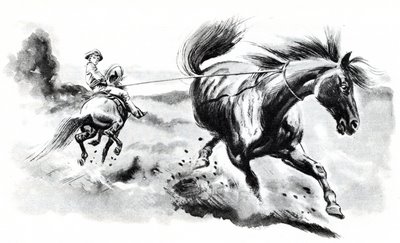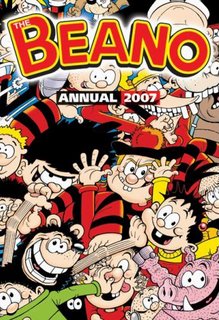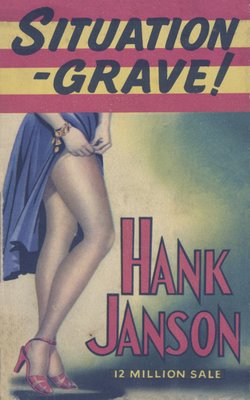Gerald William Bullett was born in Forest Hill, on 30 December 1893, the third son of businessman Robert Bullett and his wife Ellen (
nee Pegg), who had married in Blaby, Leicestershire, in 1883. The Bulletts lived in modest circumstances in suburban London and Gerald was privately educated before becoming a bank clerk at the age of 16. His first novel was written at the age of 20 but not published until 1916, after the appearance of a book of verse, by which time he was serving with the armed forces. After four years in France and Egypt he was able to attend Jesus College, Cambridge, graduating with first class honours in 1921. He became a regular contributor to the
Times Literary Supplement and other magazines, writing dozens of short stories and essays, poems and novels over the next few years.
Bullet himself wrote, in
World Authors 1900-1950, that "his published works fall naturally into two groups, the dividing line being the Second World War, during which he worked in an oversees section of the British Broadcasting Corporation. The best-known novels in the earlier group are
The Pandervils and
The Jury. Since the war he has published six more novels, a biography of George Eliot, a study of
The English Mystics and three small volumes of verse of which the latest is
News from the Village. In addition to writing, he has done a good deal of broadcasting, of book talks and his own short stories... He is a member of the selection committee of the Book Society (England), founded by Alan Bott and Hugh Walpole."

Bullett's novels were well received in their time, Conrad Aiken and V. S. Pritchett being amongst Bullett's admirors. His novel,
The Jury, telling the trial of Roderick Strood who is accused of killing his wife, was reprinted as one of the fifty classics of crime fiction published by Garland in 1976.
Storm Jameson, writing in the introduction to
Ten-Minute Tales, said: "His instinct as a writer was the poet's, to compress a complexity of emotional experience into a single precise image. This is almost the antithesis of the novelist's instinct: at its greatest the novel is diffuse, it acts out all the intricacies of a human relationship or impulse where the poet concentrates them in the fewest most significant words. Gerald was far from being witout ingenuity and inventiveness -- you only have to read
The Jury to see how much of these novelist's virtues he had -- but he was incapable of that slight falsification, that touch of the grotesque got by exaggerating the great commonplaces of human nature, which is one, perhaps the most important, element of success as a novelist. The characters of his novels, from the Pandervil family with which he began to the Peacocks who were inhabiting his brain when he died, are treated with a touch of reserve, as he treated his friends. No malice, not a trace."
Bullett's obituary in
The Times (6 January 1958) echoes Jameson's view that Bullett had received less recognition as a novelist than he was perhaps due because he was an undemonstrative and unfashionably restrained talent.
As well as being an author, anthologist, critic and poet, Bullett was also a part-founder of the short-lived publishing firm of Gerald Howe Ltd. with his friend Garfield Howe.
Bullet died at a hospital in Chichester on 3 January 1958. He had married Rosalind Gould in 1921 with whom he had a daughter.
NovelsThe Progress of Kay. A series of glimpses. London, Constable & Co., 1916.
Mr. Godly Beside Himself. London, John Lane, 1924.
The Panther. London, W. Heinemann Ltd., 1926.
The Spanish Caravel, illus. Laurence Irving. London, W. Heinemann Ltd., 1927; as
The Happy Mariners, illus. C. Walter Hodges, London, Dent, 1935.
The History of Egg Pandervil. A pure fiction. London, W. Heinemann Ltd., 1928.
Nicky, Son of Egg. London, W. Heinemann Ltd., 1929.
Marden Fee. London, William Heinemann, 1931.
Remember Mrs. Munch, illus. Haydn Mackey. London, William Heinemann, 1931.
I'll Tell You Everything. A frolic, with J. B. Priestley. London, William Heinemann, 1933.
The Quick and the Dead, illus. T. L.. Poulton. London, William Heinemann, 1933.
Eden River. London, William Heinemann, 1934.
The Jury. London, J. M. Dent & Sons, 1935; revised, London, Pan Books (GP65), 1957.
The Snare of the Fowler. London, J. M. Dent & Sons, 1936.
The Bending Sickle. London, J. M. Dent & Sons, 1938.
A Man of Forty. London, J. M. Dent & Sons, 1940.
When the Cat's Away. London, J. M. Dent & Sons, 1940.
The Elderbrook Brothers. London, J. M. Dent & Sons, 1945.
Judgement in Suspense. London, J. M. Dent & Sons, 1946.
Men at High Table & The House of Strangers. London, J. M. Dent & Sons, 1948.
Cricket in Heaven. London, J. M. Dent & Sons, 1949.
The Trouble at Number Seven. London, Michael Joseph, 1952.
The Alderman's Son. London, Michael Joseph, 1954.
One Man's Poison. London, Chatto & Windus, 1956.
The Daughters of Mrs. Peacock. London, J. M. Dent & Sons, 1957.
The Peacock Brides. London, J. M. Dent & Sons, 1958.
OmnibusThe Pandervils: Egg & Nicky (contains
The History of Egg Pandervil and
Nicky, Son of Egg). London, Heinemann, 1930; new and revised edition, London, J. M. Dent & Sons, 1943.
CollectionsThe Street of the Eye, and nine other tales. London, John Lane, 1923.
The Baker's Cart, and other tales. London, John Lane, 1925.
The World in Bud. Tales. London, W. Heinemann Ltd., 1928.
Gerald Bullett (Short Stories of To-day and Yesterday). London, George G. Harrap, 1929.
Helen's Lovers, and other tales. London, William Heinemann, 1932.
Twenty-Four Tales. London, J. M. Dent & Sons, 1938.
Selected Stories. Dublin, M. Fridberg, 1947.
Ten-Minute Tales, and some others, foreword by Storm Jameson. London, J. M. Dent & Sons, 1959.
The Enchanting Moment & The Moment of Disenchantment. Collected supernatural tales. Portland, ME, Thomas Loring & Co., (
forthcoming).
VerseDreams o' Mine, introduction by S. Gertrude Ford. London, Erskine Macdonald, Sep 1915.
Mice, & other poems, with a general note by Sir Arthur Quiller Couch. Cambridge, Perkin Warbeck, Jan 1921.
Madonna and Child. A carol (music score), with music by Eric H. Thiman. London, Chappell & Co., 1930.
The Bubble. London, J. M. Dent & Sons, 1934.
White Frost. Bognor Regis, privately printed by James Guthrie at the Pear Tree Press, 1936.
Poems in Pencil. London, J. M. Dent & Sons, 1937.
Litany: TTBB (music score), Schubert, arranged by J. Michael Diack. London, Paterson's Publications, 1938.
Winter Solstice. Cambridge, The University Press, 1943.
The Golden Year of Fan Cheng-ta. A Chinese rural sequence, rendered into English verse by Gerald Bullett, with notes and calligraphic decorations by Tsui Chi. Cambridge, The University Press, 1946; as
Five Seasons of a Golden Year. A Chinese pastoral by Fan Ch'eng-ta, translated by Gerald Bullet, with calligraphy of T. C. Lai, Hong Kong, Chinese University Press, 1980.
Poems. Cambridge, The University Press, 1949.
News from the Village. Cambridge, The University Press, 1952.
Windows on a Vanished Time. London, Michael Joseph, 1955.
Collected Poems, selected by E. M. W. Tillyard. London, J. M. Dent & Sons, 1959.
We Saw Him Sleeping (music score), music by Ernest Bullock. London, Novello & Co., 1961.
Non-fictionThe Innocence of G. K. Chesterton. London, C. Palmer, 1923.
Students' Notes to An Anthology of Modern Verse by Sir A. M. M. Methuen. London, Methuen & Co., 1925.
Modern English Fiction: A Personal View. London, H. Jenkins Ltd., 1926.
Dreaming, edited by J. B. Priestley. London, Jarrolds, 1928.
Germany, with a chapter on German tourism and mountaineering by E. T. & E. Harrison Compton. London, A. & C. Black Ltd., 1930.
Problems of Religion. London, W. Heinemann, 1938.
Achievements in Feeding Britain. London, Pilot Press, 1944.
George Eliot: Her Life and Books. London, Collins, 1947.
The English Mystics. London, Michael Joseph, 1950.
Sydney Smith: A biography and a selection. London, Michael Joseph, 1951.
OthersWalt Whitman: A study and a selection. London, G. Richards Ltd., 1924.
Seeds of Israel. Tales from the English Bible, edited, with introduction, by Gerald Bullett; with woodcuts by Helen Kapp. London, G. Howe, 1927.
Middlemarch by George Eliot, introduction by Gerald Bullett. London, Dent, 1930; New York, E. P. Dutton, 1930.
The Fothergill Omnibus. For which eighteen eminent authors have written short stories upon one and the same plot, with introductions by John Forthergill, R. G. Collingwood & Gerald Gould. London, Eyre & Spottiswoode, 1931.
The How-&-Why Series, ed. Gerald Bullett. London, A. & C. Black, 20 vols., 1931-45.
The Testement of Light. An anthology, ed. Gerald Bullett. London, J. M. Dent & Sons, 1932.
The English Galaxy of Shorter Poems, ed. Gerald Bullett. London, J. M. Dent & Sons, 1933.
The Pattern of Courtesy. An anthology continuing The Testement of Light, ed. Gerald Bullett. London, J. M. Dent & Sons, 1934; as
The Testament of Light Second Series, London, J. M. Dent & Sons, 1938.
The Story of English Literature. London, A. & C. Black (How & Why series 20), 1935.
A Book of Good Faith. A miscellany of passages, chosen and arranged by Gerald Bullett. London, Watts & Co. (Thinker's Library 66), 1938.
The Fair Haven by Samuel Butler, with an introduction by Gerald Bullett. London, Watts & Co. (Thinker's Library 70), 1938.
A Candidate for Truth. Passages from Emerson, chosen and arranged by Gerald Bullett. London, Watts & Co. (Thinker's Library 71), 1938.
The Phoenix and Turtle by William Shakespeare, ed. with introduction by Gerald Bullett. Flansham, Bognor Regis, Pear Tree Books, 1938.
What is Happiness? by Martin Armstrong, Gerald Bullett [and others]. London, 1938.
The Jackdaw's Nest. A fivefold anthology, ed. Gerald Bullett. London, Macmillan & Co., 1939.
Poems by John Keats, edited with an introduction by Gerald Bullett. London, J. M. Dent & Sons, 1944; New York, E. P. Dutton & Co., 1944.
Readings in English Literature, from Chaucer to Matthew, chosen and ed. by Gerald Bullett. London, A. & C. Black, 1945.
Silver Poets of the Sixteenth Century, ed. with an introduction by Gerald Bullett. London, J. M. Dent & Sons, 1947; New York, E. P. Dutton, 1947.
The Mill on the Floss by George Eliot, with an introduction by Gerald Bullett. London, Collins, 1952.
PlaysMr. Godly Beside Himself. A comedy in four acts (produced 1926). London, Ernest Benn, 1926.
Scandal in Assyria, by Axel Kjellstrom, adapted by Gerald Bullett (produced 1939).
(* A longish piece inspired by a single contribution to
Swift Annual 3 (1956). Bullett did, however, write a charming children's book,
The Spanish Caravel (1927), later reissued as
The Happy Mariners and, later still, adapted as a radio play by John Kier Cross and broadcast in the Children's Hour in January 1942 under the title
The Ship in the Bottle. The story involves a desert island and buccaneers.)


















